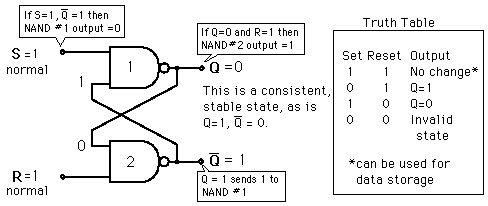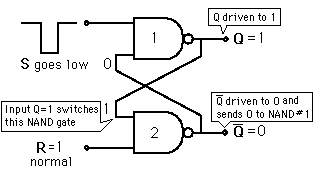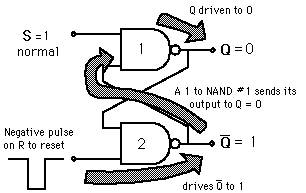NAND-gate Latch

The time sequence at right shows the conditions under which the set and reset inputs cause a state change, and when they don't. The concept of a "latch" circuit is important to creating memory devices. The function of such a circuit is to "latch" the value created by the input signal to the device and hold that value until some other signal changes it. | 
|
| Set-reset Flip-flop | NOR-gate Latch |
| To Clocked Version | NAND Gate |
| Application in D Flip-flop |
Electronics concepts
Digital circuits
| HyperPhysics*****Electricity and magnetism | R Nave |

 which does not switch the flip-flop, so it ignores further input.
which does not switch the flip-flop, so it ignores further input. 